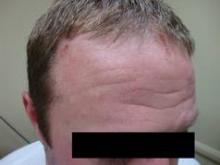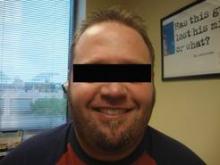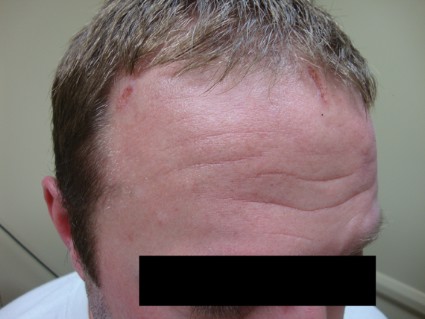User login
Orlando Dermatology Aesthetic and Clinical Conference (ODAC)
Systemic steroid prescriptions for psoriasis persist
ORLANDO – Although current guidelines do not recommend the use of systemic steroids for treatment of psoriasis, dermatologists still prescribe them, according to data presented at the Orlando Dermatology Aesthetic and Clinical Conference.
Researchers at Wake Forest University in Winston-Salem, N.C., analyzed a national database and found that U.S. dermatologists wrote more than 90% of the nearly 660,000 systemic steroid prescriptions for psoriasis over an 11-year period.
The authors concluded that the usefulness of systemic steroids for psoriasis should be reexamined in light of their findings.
"This is an issue that has been buried for a while," said Amir Al-Dabagh, the study’s first author and a fourth-year medical student at Wake Forest University. "Everyone knows it’s there, but it’s not discussed," he said.
Systemic steroids are not recommended for treatment of psoriasis because of evidence that discontinuing the drugs could lead to a rebound flair, sometimes beyond the baseline.
In addition, there are no data that systemic steroids are safe and effective in long-term treatment of psoriasis, said Dr. Joel Gelfand, one of the authors of the American Academy of Dermatology’s psoriasis guidelines, who was not involved in the analysis.
But, in reality, physicians do prescribe systemic steroids from time to time, especially when the patients are acutely flaring, said Dr. Gelfand, of the University of Pennsylvania in Philadelphia. "The general consensus is that it’s not a good thing to do. But sometimes the practitioners are stuck, and there are no other options for patients," he said in an interview.
Also, he added, not everyone follows the guidelines.
To analyze the prescription of steroids, Mr. Al-Dabagh and his colleagues used data from the National Ambulatory Medical Care Survey (NAMCS) from 1989 to 2010. In addition to showing that 90% of the systemic steroid prescriptions for psoriasis were written by dermatologists, the results indicated that three of the nine systemic therapies prescribed were steroids. Prednisone was ranked fourth among the nine therapies, and ranked first among the three systemic steroids, followed by methylprednisolone and dexamethasone.
In addition, no significant change was observed in the use of systemic steroids over the 11-year study period.
The poster’s findings are similar to the results of a 2011 German study that showed that systemic steroids are often used to treat psoriasis, although this treatment is not recommended in the European guidelines. The majority of prescribers in the German study were general practitioners and internists in Europe (J. Dtsch. Dermatol. Ges. 2011;9:833-8).
"If the dogma were true that systemic corticosteroids are frequently associated with severe exacerbations of the disease, then with the wide use of corticosteroids both for psoriasis and for comorbidities of psoriasis, we would expect that large numbers of patients would be seen for major problems such as precipitation, worsening, or rebound of their psoriasis. However, this has not been reported in the literature," Mr. Al-Dabagh and his colleagues wrote.
Academic dermatologists only see patients who aren’t cured by the physicians who prescribe the medications, which results in a selection bias where only the worst cases are seen in academia, the researchers noted. "This phenomenon may explain how steroids may be effective even though ‘everybody knows they don’t work,’ " they added.
Dr. Steven R. Feldman, senior author of the analysis and professor of dermatology at Wake Forest University, said that he and colleagues agreed with the current guidelines, but clinical trials of steroids for psoriasis would be helpful. "Avoiding systemic steroids in psoriasis is dogma, but is not supported by a strong scientific rationale," he said.
"There are long-term side effects from chronic use of systemic steroids, but we can say that about nearly all the treatments we use. The concerns about rebound from short-term use for psoriasis may be overblown as well," he added.
The debate on the use of systemic steroids for treatment of psoriasis is ongoing. Authors of a 2012 European study tried to parse out fact from fiction regarding the treatment and the condition. "There’s a remarkable lack of literature addressing adverse effects such as rebound, pustular, or erythrodermic flares or even new occurrence of psoriasis in patients with a negative disease history," the authors wrote. "A re-evaluation of the treatment of psoriasis and/or psoriatic arthritis with systemic steroids is necessary," the authors concluded (J. Eur. Acad. Dermatol. Venereol. 2012 Jul 25 [doi: 10.1111/j.1468-3083.2012.04656.x]).
More research is needed in the form of double-blind, controlled trials, Mr. Al-Dabagh said.
Mr. Al-Dabagh had no disclosures. Dr. Gelfand had no disclosures. Dr. Feldman said he had relationships with several pharmaceutical companies, but none produced systemic steroids.
ORLANDO – Although current guidelines do not recommend the use of systemic steroids for treatment of psoriasis, dermatologists still prescribe them, according to data presented at the Orlando Dermatology Aesthetic and Clinical Conference.
Researchers at Wake Forest University in Winston-Salem, N.C., analyzed a national database and found that U.S. dermatologists wrote more than 90% of the nearly 660,000 systemic steroid prescriptions for psoriasis over an 11-year period.
The authors concluded that the usefulness of systemic steroids for psoriasis should be reexamined in light of their findings.
"This is an issue that has been buried for a while," said Amir Al-Dabagh, the study’s first author and a fourth-year medical student at Wake Forest University. "Everyone knows it’s there, but it’s not discussed," he said.
Systemic steroids are not recommended for treatment of psoriasis because of evidence that discontinuing the drugs could lead to a rebound flair, sometimes beyond the baseline.
In addition, there are no data that systemic steroids are safe and effective in long-term treatment of psoriasis, said Dr. Joel Gelfand, one of the authors of the American Academy of Dermatology’s psoriasis guidelines, who was not involved in the analysis.
But, in reality, physicians do prescribe systemic steroids from time to time, especially when the patients are acutely flaring, said Dr. Gelfand, of the University of Pennsylvania in Philadelphia. "The general consensus is that it’s not a good thing to do. But sometimes the practitioners are stuck, and there are no other options for patients," he said in an interview.
Also, he added, not everyone follows the guidelines.
To analyze the prescription of steroids, Mr. Al-Dabagh and his colleagues used data from the National Ambulatory Medical Care Survey (NAMCS) from 1989 to 2010. In addition to showing that 90% of the systemic steroid prescriptions for psoriasis were written by dermatologists, the results indicated that three of the nine systemic therapies prescribed were steroids. Prednisone was ranked fourth among the nine therapies, and ranked first among the three systemic steroids, followed by methylprednisolone and dexamethasone.
In addition, no significant change was observed in the use of systemic steroids over the 11-year study period.
The poster’s findings are similar to the results of a 2011 German study that showed that systemic steroids are often used to treat psoriasis, although this treatment is not recommended in the European guidelines. The majority of prescribers in the German study were general practitioners and internists in Europe (J. Dtsch. Dermatol. Ges. 2011;9:833-8).
"If the dogma were true that systemic corticosteroids are frequently associated with severe exacerbations of the disease, then with the wide use of corticosteroids both for psoriasis and for comorbidities of psoriasis, we would expect that large numbers of patients would be seen for major problems such as precipitation, worsening, or rebound of their psoriasis. However, this has not been reported in the literature," Mr. Al-Dabagh and his colleagues wrote.
Academic dermatologists only see patients who aren’t cured by the physicians who prescribe the medications, which results in a selection bias where only the worst cases are seen in academia, the researchers noted. "This phenomenon may explain how steroids may be effective even though ‘everybody knows they don’t work,’ " they added.
Dr. Steven R. Feldman, senior author of the analysis and professor of dermatology at Wake Forest University, said that he and colleagues agreed with the current guidelines, but clinical trials of steroids for psoriasis would be helpful. "Avoiding systemic steroids in psoriasis is dogma, but is not supported by a strong scientific rationale," he said.
"There are long-term side effects from chronic use of systemic steroids, but we can say that about nearly all the treatments we use. The concerns about rebound from short-term use for psoriasis may be overblown as well," he added.
The debate on the use of systemic steroids for treatment of psoriasis is ongoing. Authors of a 2012 European study tried to parse out fact from fiction regarding the treatment and the condition. "There’s a remarkable lack of literature addressing adverse effects such as rebound, pustular, or erythrodermic flares or even new occurrence of psoriasis in patients with a negative disease history," the authors wrote. "A re-evaluation of the treatment of psoriasis and/or psoriatic arthritis with systemic steroids is necessary," the authors concluded (J. Eur. Acad. Dermatol. Venereol. 2012 Jul 25 [doi: 10.1111/j.1468-3083.2012.04656.x]).
More research is needed in the form of double-blind, controlled trials, Mr. Al-Dabagh said.
Mr. Al-Dabagh had no disclosures. Dr. Gelfand had no disclosures. Dr. Feldman said he had relationships with several pharmaceutical companies, but none produced systemic steroids.
ORLANDO – Although current guidelines do not recommend the use of systemic steroids for treatment of psoriasis, dermatologists still prescribe them, according to data presented at the Orlando Dermatology Aesthetic and Clinical Conference.
Researchers at Wake Forest University in Winston-Salem, N.C., analyzed a national database and found that U.S. dermatologists wrote more than 90% of the nearly 660,000 systemic steroid prescriptions for psoriasis over an 11-year period.
The authors concluded that the usefulness of systemic steroids for psoriasis should be reexamined in light of their findings.
"This is an issue that has been buried for a while," said Amir Al-Dabagh, the study’s first author and a fourth-year medical student at Wake Forest University. "Everyone knows it’s there, but it’s not discussed," he said.
Systemic steroids are not recommended for treatment of psoriasis because of evidence that discontinuing the drugs could lead to a rebound flair, sometimes beyond the baseline.
In addition, there are no data that systemic steroids are safe and effective in long-term treatment of psoriasis, said Dr. Joel Gelfand, one of the authors of the American Academy of Dermatology’s psoriasis guidelines, who was not involved in the analysis.
But, in reality, physicians do prescribe systemic steroids from time to time, especially when the patients are acutely flaring, said Dr. Gelfand, of the University of Pennsylvania in Philadelphia. "The general consensus is that it’s not a good thing to do. But sometimes the practitioners are stuck, and there are no other options for patients," he said in an interview.
Also, he added, not everyone follows the guidelines.
To analyze the prescription of steroids, Mr. Al-Dabagh and his colleagues used data from the National Ambulatory Medical Care Survey (NAMCS) from 1989 to 2010. In addition to showing that 90% of the systemic steroid prescriptions for psoriasis were written by dermatologists, the results indicated that three of the nine systemic therapies prescribed were steroids. Prednisone was ranked fourth among the nine therapies, and ranked first among the three systemic steroids, followed by methylprednisolone and dexamethasone.
In addition, no significant change was observed in the use of systemic steroids over the 11-year study period.
The poster’s findings are similar to the results of a 2011 German study that showed that systemic steroids are often used to treat psoriasis, although this treatment is not recommended in the European guidelines. The majority of prescribers in the German study were general practitioners and internists in Europe (J. Dtsch. Dermatol. Ges. 2011;9:833-8).
"If the dogma were true that systemic corticosteroids are frequently associated with severe exacerbations of the disease, then with the wide use of corticosteroids both for psoriasis and for comorbidities of psoriasis, we would expect that large numbers of patients would be seen for major problems such as precipitation, worsening, or rebound of their psoriasis. However, this has not been reported in the literature," Mr. Al-Dabagh and his colleagues wrote.
Academic dermatologists only see patients who aren’t cured by the physicians who prescribe the medications, which results in a selection bias where only the worst cases are seen in academia, the researchers noted. "This phenomenon may explain how steroids may be effective even though ‘everybody knows they don’t work,’ " they added.
Dr. Steven R. Feldman, senior author of the analysis and professor of dermatology at Wake Forest University, said that he and colleagues agreed with the current guidelines, but clinical trials of steroids for psoriasis would be helpful. "Avoiding systemic steroids in psoriasis is dogma, but is not supported by a strong scientific rationale," he said.
"There are long-term side effects from chronic use of systemic steroids, but we can say that about nearly all the treatments we use. The concerns about rebound from short-term use for psoriasis may be overblown as well," he added.
The debate on the use of systemic steroids for treatment of psoriasis is ongoing. Authors of a 2012 European study tried to parse out fact from fiction regarding the treatment and the condition. "There’s a remarkable lack of literature addressing adverse effects such as rebound, pustular, or erythrodermic flares or even new occurrence of psoriasis in patients with a negative disease history," the authors wrote. "A re-evaluation of the treatment of psoriasis and/or psoriatic arthritis with systemic steroids is necessary," the authors concluded (J. Eur. Acad. Dermatol. Venereol. 2012 Jul 25 [doi: 10.1111/j.1468-3083.2012.04656.x]).
More research is needed in the form of double-blind, controlled trials, Mr. Al-Dabagh said.
Mr. Al-Dabagh had no disclosures. Dr. Gelfand had no disclosures. Dr. Feldman said he had relationships with several pharmaceutical companies, but none produced systemic steroids.
AT THE ODAC CONFERENCE
Neurotic excoriation case treated successfully with onabotulinumtoxinA
ORLANDO – In what might be the first success of its kind, dermatologists at the University of Texas report treating a case of neurotic excoriations with onabotulinumtoxinA.
A 36-year-old man presented with multiple excoriated, crusted erosions on his face and scalp and also complained of tension headaches and an inability to relax.
In an attempt to relieve his headaches, Dr. Jennifer Gordon and her colleagues injected his glabella and forehead with 56 units of onabotulinumtoxinA (Botox and Botox Cosmetic).
To their surprise, in 3 weeks he was not only relieved of his headaches, but also of his excoriations.
The patient has been free of symptoms for the past year and receives maintenance injections every 4-6 months, said Dr. Gordon, a second-year dermatology resident at the University of Texas, Austin.
Neurotic excoriations (NE), also known as psychogenic excoriation, dermatillomania, or skin picking syndrome, are the result of compulsive skin picking and scratching. The condition occurs in the absence of a physical pathology and is usually associated with psychological and medical conditions that cause psychological distress.
Some studies suggest that roughly 2% of the patients at dermatology clinics have NE, and there’s a 9% prevalence of NE in patients with pruritus (itching). Researchers believe, however, that the incidence and prevalence of the condition are underreported.
Current treatments for NE include antidepressants and cognitive-behavioral therapy.
Dr. Gordon, who presented a poster at the Orlando Dermatology Aesthetic and Clinical Conference, reported that her patient described "hairs" coming out of his skin, and that twisting his body caused the hairs to coil and pull. As a result, he would pick at these areas on his face and scalp. He also complained of frequent tension headaches.
His lab values were within normal limits, Dr. Gordon reported. He was first treated for folliculitis and was given wound care instructions. He was later started on citalopram, which eliminated complaints about the hairs, but the excoriations persisted. The patient already had been treated for delusions, "and we don’t hesitate to send [the patients] for psych treatment if they need it," said Dr. Gordon, who published the poster with Dr. Jason S. Reichenberg, a faculty member at the university.
The investigators said that they believed the onabotulinumtoxinA might have induced remission in the patient by eliminating tension headaches, which could have been a trigger for his picking. The treatment also might have helped his underlying depression.
Although some statistics show that as many as one-third of NE patients also have tension or migraine headaches and gynecologic symptoms related to menstruation, it is unclear whether this treatment would work on other patients with symptoms similar to this particular patient. It’s also not yet known whether the treatment would work on other sites of the body, or on patients who do not have tension headaches, Dr. Gordon said.
The key to treatment of NE, she said, "is finding the underlying trigger."
Dr. Gordon said that she had no disclosures.
On Twitter @naseemsmiller
ORLANDO – In what might be the first success of its kind, dermatologists at the University of Texas report treating a case of neurotic excoriations with onabotulinumtoxinA.
A 36-year-old man presented with multiple excoriated, crusted erosions on his face and scalp and also complained of tension headaches and an inability to relax.
In an attempt to relieve his headaches, Dr. Jennifer Gordon and her colleagues injected his glabella and forehead with 56 units of onabotulinumtoxinA (Botox and Botox Cosmetic).
To their surprise, in 3 weeks he was not only relieved of his headaches, but also of his excoriations.
The patient has been free of symptoms for the past year and receives maintenance injections every 4-6 months, said Dr. Gordon, a second-year dermatology resident at the University of Texas, Austin.
Neurotic excoriations (NE), also known as psychogenic excoriation, dermatillomania, or skin picking syndrome, are the result of compulsive skin picking and scratching. The condition occurs in the absence of a physical pathology and is usually associated with psychological and medical conditions that cause psychological distress.
Some studies suggest that roughly 2% of the patients at dermatology clinics have NE, and there’s a 9% prevalence of NE in patients with pruritus (itching). Researchers believe, however, that the incidence and prevalence of the condition are underreported.
Current treatments for NE include antidepressants and cognitive-behavioral therapy.
Dr. Gordon, who presented a poster at the Orlando Dermatology Aesthetic and Clinical Conference, reported that her patient described "hairs" coming out of his skin, and that twisting his body caused the hairs to coil and pull. As a result, he would pick at these areas on his face and scalp. He also complained of frequent tension headaches.
His lab values were within normal limits, Dr. Gordon reported. He was first treated for folliculitis and was given wound care instructions. He was later started on citalopram, which eliminated complaints about the hairs, but the excoriations persisted. The patient already had been treated for delusions, "and we don’t hesitate to send [the patients] for psych treatment if they need it," said Dr. Gordon, who published the poster with Dr. Jason S. Reichenberg, a faculty member at the university.
The investigators said that they believed the onabotulinumtoxinA might have induced remission in the patient by eliminating tension headaches, which could have been a trigger for his picking. The treatment also might have helped his underlying depression.
Although some statistics show that as many as one-third of NE patients also have tension or migraine headaches and gynecologic symptoms related to menstruation, it is unclear whether this treatment would work on other patients with symptoms similar to this particular patient. It’s also not yet known whether the treatment would work on other sites of the body, or on patients who do not have tension headaches, Dr. Gordon said.
The key to treatment of NE, she said, "is finding the underlying trigger."
Dr. Gordon said that she had no disclosures.
On Twitter @naseemsmiller
ORLANDO – In what might be the first success of its kind, dermatologists at the University of Texas report treating a case of neurotic excoriations with onabotulinumtoxinA.
A 36-year-old man presented with multiple excoriated, crusted erosions on his face and scalp and also complained of tension headaches and an inability to relax.
In an attempt to relieve his headaches, Dr. Jennifer Gordon and her colleagues injected his glabella and forehead with 56 units of onabotulinumtoxinA (Botox and Botox Cosmetic).
To their surprise, in 3 weeks he was not only relieved of his headaches, but also of his excoriations.
The patient has been free of symptoms for the past year and receives maintenance injections every 4-6 months, said Dr. Gordon, a second-year dermatology resident at the University of Texas, Austin.
Neurotic excoriations (NE), also known as psychogenic excoriation, dermatillomania, or skin picking syndrome, are the result of compulsive skin picking and scratching. The condition occurs in the absence of a physical pathology and is usually associated with psychological and medical conditions that cause psychological distress.
Some studies suggest that roughly 2% of the patients at dermatology clinics have NE, and there’s a 9% prevalence of NE in patients with pruritus (itching). Researchers believe, however, that the incidence and prevalence of the condition are underreported.
Current treatments for NE include antidepressants and cognitive-behavioral therapy.
Dr. Gordon, who presented a poster at the Orlando Dermatology Aesthetic and Clinical Conference, reported that her patient described "hairs" coming out of his skin, and that twisting his body caused the hairs to coil and pull. As a result, he would pick at these areas on his face and scalp. He also complained of frequent tension headaches.
His lab values were within normal limits, Dr. Gordon reported. He was first treated for folliculitis and was given wound care instructions. He was later started on citalopram, which eliminated complaints about the hairs, but the excoriations persisted. The patient already had been treated for delusions, "and we don’t hesitate to send [the patients] for psych treatment if they need it," said Dr. Gordon, who published the poster with Dr. Jason S. Reichenberg, a faculty member at the university.
The investigators said that they believed the onabotulinumtoxinA might have induced remission in the patient by eliminating tension headaches, which could have been a trigger for his picking. The treatment also might have helped his underlying depression.
Although some statistics show that as many as one-third of NE patients also have tension or migraine headaches and gynecologic symptoms related to menstruation, it is unclear whether this treatment would work on other patients with symptoms similar to this particular patient. It’s also not yet known whether the treatment would work on other sites of the body, or on patients who do not have tension headaches, Dr. Gordon said.
The key to treatment of NE, she said, "is finding the underlying trigger."
Dr. Gordon said that she had no disclosures.
On Twitter @naseemsmiller
AT THE ORLANDO DERMATOLOGY AESTHETIC AND CLINICAL CONFERENCE




